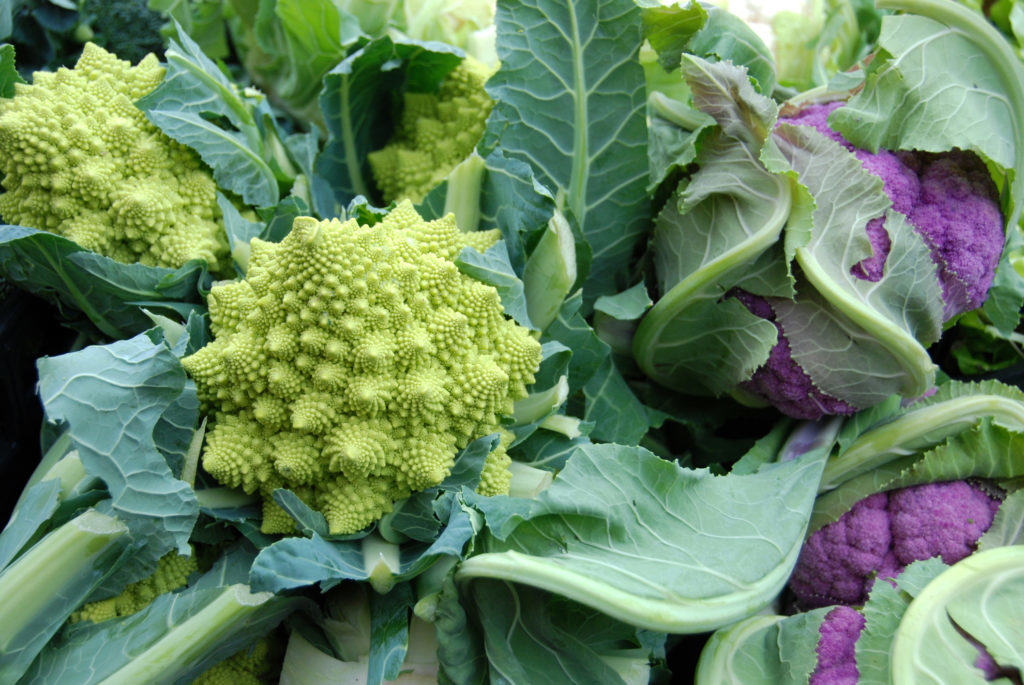What are the benefits of I3C (indole-3-carbinol)?
In this post, we ask expert educator Ann-Mary Hromek about the benefits of I3C (Indole-3-carbinol) and how it has a positive impact on aging.
Indole-3-carbinol, or I3C has many benefits and is formed from the breakdown of glucobrassicin, a chemical compound that is naturally found in cruciferous vegetables, such as broccoli, cabbage, cauliflower, collard greens, kale, turnips and brussels sprouts. Chopping or chewing cruciferous vegetables releases the plant enzyme myrosinase, which breaks down glucobrassicin into indole-3-carbinol or as it is commonly known, I3C.
There are many benefits of I3C. Research shows that when given before or simultaneously with a carcinogen, I3C has the ability to inhibit the development of cancers of the breast, uterus, colon, stomach, liver, prostate and lung. In some experimental studies, it was suggested that I3C can actually reduce oxidative stress by scavenging free radicals in your body, which further lowers our risk for certain types of cancers. It should also be noted that I3C can modify the level of sex hormones, such as estrogens, contributing to both their anticancer activity and some of their side effects.
What are the benefits of I3C as we age? What are its actions and will it slow aging or prevent disease?
There are many benefits of I3C as it plays a very important role, particularly as we get older, when it comes to protecting the body against autoimmunity. It also provides relief from symptoms of chronic fatigue syndrome and fibromyalgia, and may prevent or suppress the development of prostate, colon and breast cancers.
I3C is considered to be one of the most important phytochemicals that stimulates detoxification of the liver and the entire digestive tract. Additionally, I3C has shown to alter the metabolism or activity of the hormone estrogen in different ways, hindering the development of cancers that are estrogen-sensitive. An increase in estrogen may result in several gynecological conditions, such as bloating and tenderness of the breast during a woman’s menstrual cycle. It may also result in increased risk for heart disease, stroke, and estrogen-dependent cancers including ovarian and cervical cancer.
Can I get enough I3C in my food?
Glucobrassin is usually found in high concentrations in cabbage, brussels sprouts, cauliflower, broccoli, kale, turnips, collards, and watercress. Vegetables do not, in fact, contain I3C. Instead, I3C is only formed when the glucosinate glucobrassicin is broken down by the enzyme myorinase, a plant enzyme, during cutting or chewing.
If I am to supplement with I3C, in what form should I take it?
Since it is challenging for us to get about 20 mg per day of I3C from fresh or cooked food sources, we can take it as a supplement. It is best to talk to your practitioner about the right dose for you. I3C supplements are typically in the form of capsules or tablets.
What dose of I3C should I take?
Generally, the therapeutic dosage of I3C is close to 400 to 800 milligram daily.
Are there any risks with I3C supplementation?
There is no known state of deficiency that exists with regards to the nutrient I3C. Additionally, there are very few scientific reports that pertain to the side effects of and drug interactions with the I3C supplement. However, if you experience breathing problems, tightening of the chest, chest pains or skin rashes then you should inform your doctors about these symptoms right away as you may be allergic to the dietary supplement. Other side effects include tremor, nausea, increased blood cholesterol levels, increased bowel movements or liver problems. If you are pregnant or lactating women or taking estrogen medications, then you should avoid taking I3C due to its effects on the estrogen levels in the body.
Are there any special requirements when I take I3C?
I3C is taken preferably with meals since this nutrient’s effects are activated by stomach acid and the acidity is a usual response from food.
Does I3C need other compounds to accompany it for optimal absorption?
I3C appears to be metabolized into other compounds such as diindolylmethane (DIM), which comprises two I3Cs bound together. These compounds are then absorbed by the body to create the therapeutic effect.
If I supplement with I3C, do I need to take this in divided doses?
Typically you would take 1 capsule 2 to 3 times a day which equates to 200-800mg/day.
Can I test so as I know whether I’m deficient in I3C or to ascertain that I’m taking the correct dose for me?
As of this time, there are no known tests to determine I3C deficiency.
What is the best source of I3C?
The effects of I3C dietary supplements are still undergoing further research so it is best to get this nutrient naturally by consuming foods rich in glucobrassicin, as when chewed or cut up the I3C is created. Excellent sources are vegetables that belong to the cruciferous family of plants, such as broccoli and cabbage.
Last Reviewed: 29-Nov-2016
Ann-Mary Amber
Latest posts by Ann-Mary Amber (see all)
- This is why gut health is so important - 24/02/18
- Best antioxidants for skincare - 18/09/17
- CoQ10 health benefits - 09/07/17
